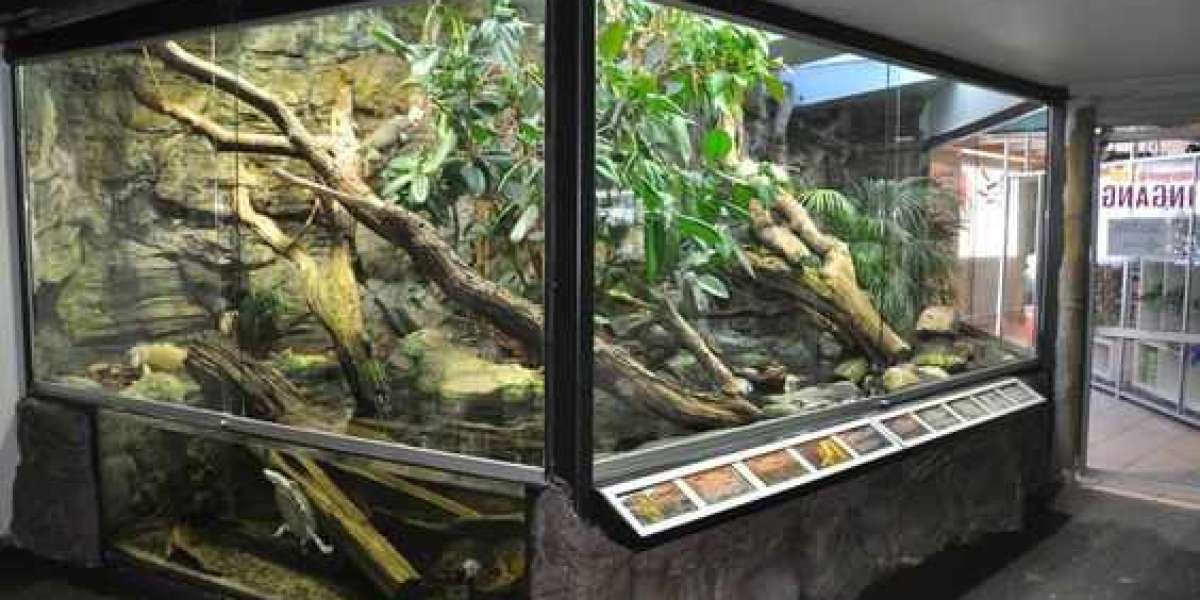Keeping reptiles as pets can be a rewarding experience. However, it requires proper care and providing the right environment for your reptile friend to thrive. The enclosure plays a key role in maintaining your reptile's health and well-being. With so many options available in the market, choosing the right reptile enclosure can be overwhelming. This article aims to break down the important factors to consider when selecting an Reptile Enclosure and maintaining it for your pet reptile.
Choosing the Appropriate Enclosure Type
There are various enclosure types for different reptile species. The first step is to identify the specific needs of your reptile to select the most suitable enclosure type.
For smaller species like geckos and smaller snakes, glass terrariums with screens are a good choice. Terrariums allow you to easily monitor your pet while providing the required heat and humidity levels. Look for terrariums with sizes between 10-30 gallons based on your reptile's size.
Larger species like bearded dragons, monitors and large snakes require bigger enclosures like plastic reptile cages or custom wood vivariums. Plastic cages are affordable and easy to clean but don't look as appealing. Vivariums have a beautiful natural wood finish but require more maintenance. For these larger species, enclosures between 30-100 gallons are appropriate.
For some ground dwelling species like tortoises, plastic or wooden outdoor pens or backyard reptile yards are great options to allow room for activity. The enclosure should be at least 4-5 times the floorspace required by the fully grown tortoise.
Defining the Correct Enclosure Dimensions
Getting the right enclosure size is crucial for your reptile's health, behavior and husbandry needs. Follow these guidelines to determine the minimum required enclosure dimensions:
- For smaller species, the enclosure footprint (length x width) should be at least 5-10 times the size of your reptile while it's still growing. For adults, 2-3 times their body length is adequate.
- Taller enclosures are always better than wider, shorter ones. Adults need enclosures at least 1.5 times their body height in height.
- The enclosure should allow enough floor space for your reptile to stretch, turn around, climb and move around freely without restrictions.
Creating the Ideal Environment
Once you have the right enclosure, focus on creating the ideal environment for your pet.
- Heating - Most reptiles require a temperature gradient from warm to cool areas using heat lamps, under tank heaters, ceramic heat emitters etc. Temperature and humidity levels need to be monitored daily.
- Substrate - Appropriate substrates allow for burrowing, humidity control and drainage. Options include newspaper, terra cotta, orchid bark, cypress mulch etc. Avoid substrates that can cause impaction if ingested.
- Hide Boxes - At least two hide boxes should be provided, one on the warm side and other on cool side for thermoregulation.
- Branches, Vines And Climbing Opportunities - Enclosures should mimic their natural habitat with fixtures for activities.
- Fresh Water - Reptiles need access to clean fresh water at all times in a bowl big enough for soaking. Change water daily.
- Decor And Furnishings - Addition of plants, rocks, cork bark, branches create visual stimulation and environmental enrichment.
Maintaining Optimal Hygiene
Like any pet enclosure, reptile cages need regular cleaning to keep your pet healthy and stress-free.
- Spot clean daily by removing feces and uneaten food to maintain hygiene.
- Do a full enclosure cleaning every 1-2 weeks by removing everything and deep cleaning with hot water, Diluted bleach solution or reptile cage cleaners.
- Disinfect hard surfaces and decor, rinse properly and let fully dry before returning pets and furnishings.
- Replace substrates completely every 4-6 weeks to maintain optimal humidity and odor control.
With the proper enclosure set up and care, you can create suitable living conditions for your scaly friend and observe their natural behaviors. Always consult your vet or local reptile shop for species-specific housing guidelines. With the right habitat, your pet reptile is sure to thrive under your care for many years.
I hope this detailed guide helps you choose and set up the perfect enclosure for your new reptile pet. Proper housing plays a key role in their health, so take time to get it right from the start. Let me know if you need any other reptile care tips.
Get more insights on this topic: https://www.trendingwebwire.com/reptile-enclosure-designing-the-perfect-home-for-your-pet-reptile/








